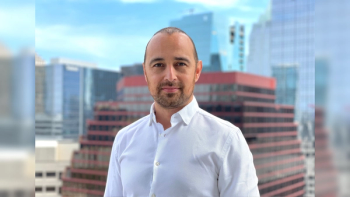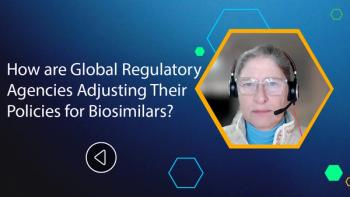
Key Trends Shaping the Future of Drug Development
In this Pharmaceutical Executive video interview, Optum Rx clinical pharmacist, Arash Sadeghi, discusses upcoming advancements in the drug pipeline and trends shaping the future of drug development.
Looking beyond the three highlighted drugs, what other upcoming advancements in the drug pipeline are particularly exciting to you? What key trends do you see shaping the future of drug development?
I think one is that we're going to continue to see a steady stream of gene therapies approved. We saw that start a couple years ago. And that's expected to continue in 2024. And beyond this is just going to become kind of routine now that we're going to probably get, you know several gene therapies every year. And obviously, these products are often treating very rare conditions, diseases with a very high unmet need. Need, sometimes the data can, you know, can be a little bit well, leaves a little bit to be desired because they're getting approved based on kind of short-term outcomes. But sometimes the data is very, also very promising. And in conditions where there is a really, again, very high morbidity and mortality. So, I think we're going to continue to see those gene therapies, even specifically in in the second quarter. And you'll see this highlighted in our next report, we do talk about another gene therapy coming in, it's actually the second gene therapy for hemophilia B. So that's another kind of interesting point here. For gene therapies, we started to see some get approved. They were the first gene therapy in their conditions. You know, for instance, with hemophilia B, we got him Genex. That was the first gene therapy for that condition. And now we could get another gene therapy for hemophilia B. So, you're going to also start to see some competition for some of these very rare conditions. So, I think that's one thing to watch.
I think COPD is another kind of interesting condition to keep an eye on. Very common pulmonary condition in the US affects millions of people haven't really had a lot of innovation in the treatment of COPD and a long time are expecting potentially a new inhaler to be approved or new nebulizer inhaler to be approved in the in the second quarter. And that's another drug we're expecting to highlight. And there's also other drugs, other biologics for COPD that are coming down later this year, and then into next year. So that's an interesting one, I think, I think the watch.
The other is just kind of continuing to monitor the weight loss space and the GLP, one receptor agonists. That's an area that's continuing to evolve, we're continuously getting new data in that space. And obviously, there's been a huge increase in utilization for those products. So that's always kind of Top of Mind continuing to monitor the situation with the weight loss products and the GLP ones and what's happening in the pipeline. And it's kind of like leads into the you know, your next question about kind of key trends in the pipeline. I think the big one is, and this is something we've already been seeing for a long time is rare orphan and gene therapies continue to be, you know, a huge section of drug development. So, if you look at the last several years, there's actually been more rare drugs approved, more orphan drugs approved the non-orphan, every year, a majority of drugs tend to actually be rare drugs are drugs using being used to treat rare diseases. And so, we're going to, I think, continue to see that to happen. That's where so much of the R&D is. And a lot of that is because there's just a high need for these conditions. I think the other big trend, and again, this is more of a continuation of what we've seen is that so much of the pipeline is focused on specialty drugs. And these obviously, tend to be expensive products. But if you look at the last few years, and what we're projecting this year, about a third of products are three fourths of products. 75%, are expected to be specialty drugs. And the reason for that is because so many products now, again, are treating orphan conditions. So those are almost always specialty.
So much of the pipeline is oncology, about, like 20 to 25% of the pipeline is oncology. And those typically are all going to be specialty drugs. And then even for some of the more chronic conditions, you have these very high-cost drugs. You know, resume dramas are a good example, that potentially could be, you know, 30 to 50,000 per year for NASH. And again, that would be another specialty product. So that's another area where you're just we're just seeing a huge growth in specialty versus the traditional space. And that's just a byproduct of the type of drugs that are being developed and being approved.
Newsletter
Lead with insight with the Pharmaceutical Executive newsletter, featuring strategic analysis, leadership trends, and market intelligence for biopharma decision-makers.





